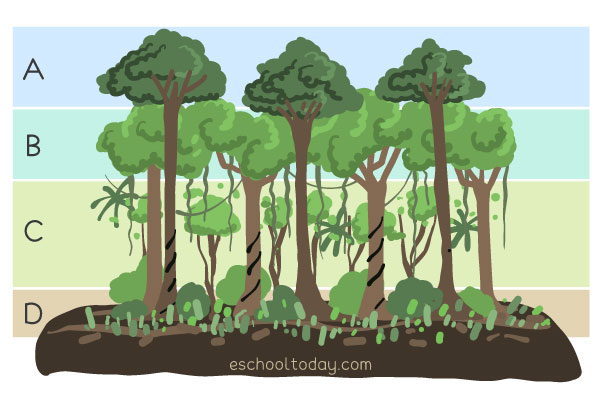- Forest Preservation
The layers of a typical rain forest
Now, we shall look at the basic structure (layers) of a typical forest.

Let’s take the Rainforest as an example. There are four layers:
The Emergent Layer (A):
This layer is very sunny because it is the very top and only the tallest trees reach this level. It is also known as the overstory.
Animals found in this layer include birds, butterflies, small monkeys, bats, snakes, and bugs.
The Canopy Layer (B):
The canopy is the thickest layer, and rain falling to the ground layer is mostly stopped by the thick foliage. Most trees in the forest grow to this height. Some plants grow in the canopy layer whose roots don’t reach the ground. These are called air plants.
Animals found in this layer include birds, monkeys, frogs, and sloths, lizards, snakes, and many insects.
The Understory (C):
This layer has many vines and dense vegetation but not much sunlight, as it is all blocked by the canopy.
Animals found in this layer include birds, butterflies, frogs, and snakes.
The Forest Floor (D):
This layer is dark, damp, full of many dead leaves, twigs, and dead plants. It is usually clear of vegetation, with little or no winds and rains reaching there. The forest floor is dark due to the trees above preventing the sunlight from entering the forest. It is estimated that only 2% of the sunlight reaches the floor.
Animals found in this layer include jaguars in South America, gorillas, leopards in Africa, tapirs, tigers, and elephants in Asia.
